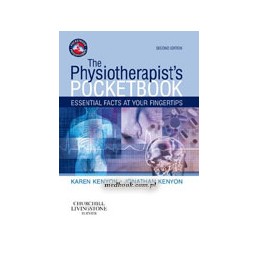- Obniżka


 Dostawa
Dostawa
Wybierz Paczkomat Inpost, Orlen Paczkę, DHL, DPD, Pocztę, email (dla ebooków). Kliknij po więcej
 Płatność
Płatność
Zapłać szybkim przelewem, kartą płatniczą lub za pobraniem. Kliknij po więcej szczegółów
 Zwroty
Zwroty
Jeżeli jesteś konsumentem możesz zwrócić towar w ciągu 14 dni*. Kliknij po więcej szczegółów
Opis
Section 2 Musculoskeletal Muscle innervation chart Muscles listed by function Alphabetical listing of muscles The Medical Research Council scale for muscle power Trigger points Normal joint range of movement Average range of segmental movement Close packed positions and capsular patterns for selected joints Common postures Beighton hypermobility score Beighton criteria: diagnostic criteria for benign joint hypermobility syndrome Common classifications of fractures Classification of ligament and muscle sprains Common musculoskeletal tests Neurodynamic tests Precautions with physical neural examination and management Nerve pathways Diagnostic triage for back pain (including red flags) Psychosocial yellow flags Musculoskeletal assessment References and further reading
Section 3 Neurology Neuroanatomy illustrations Signs and symptoms of cerebrovascular lesions Signs and symptoms of injury to the lobes of the brain Signs and symptoms of haemorrhage to other areas of the brain Cranial nerves Cranial nerves Key features of upper and lower motor neurone lesions Functional implications of spinal cord injury Glossary of neurological terms Neurological tests Modified Ashworth scale Neurological assessment References and further reading
Section 4 Respiratory Respiratory anatomy illustrations Respiratory volumes and capacities Chest X-rays Auscultation Percussion note Interpreting blood gas values Respiratory failure Nasal cannula Sputum analysis Modes of mechanical ventilation Cardiorespiratory monitoring ECGs Biochemical and haematological studies Treatment techniques Tracheostomies Respiratory assessment References and further reading
Section 5 Pathology Alphabetical listing of pathologies Diagnostic imaging Electrodiagnostic tests
Section 6 Pharmacology Drug classes A-Z of drugs Prescription abbreviations Further reading
Section 7 Appendices Maitland symbols Grades of mobilization/manipulation Abbreviations Prefixes and suffixes Adult basic life support Paediatric basic life support Conversions and units Laboratory values Physiotherapy management of the spontaneously breathing, acutely breathless patient
Indeks: 91358
Autor: Terry Martin
